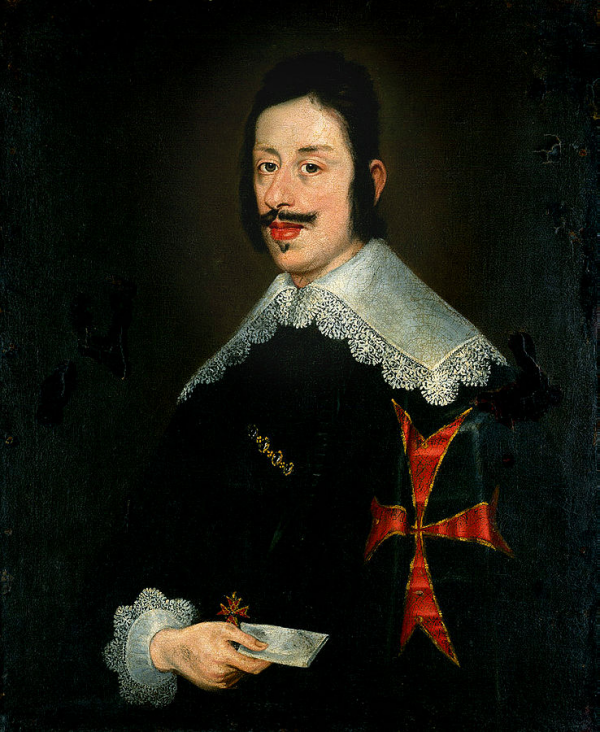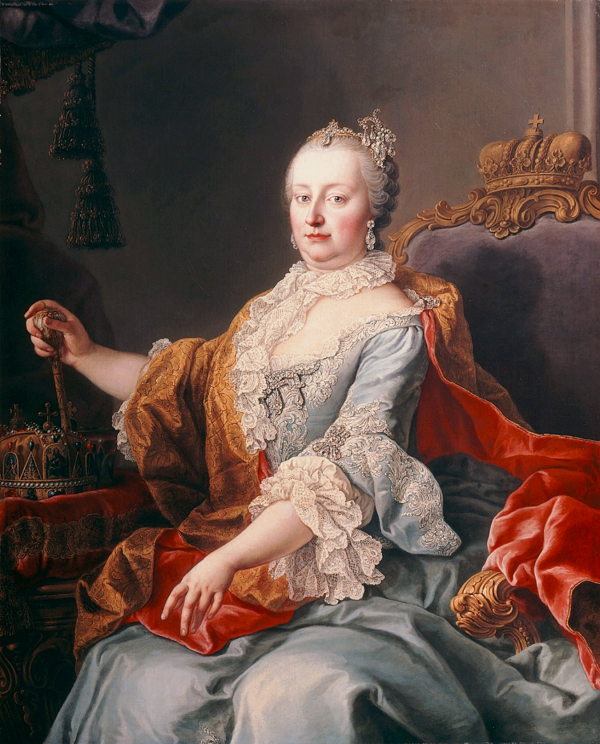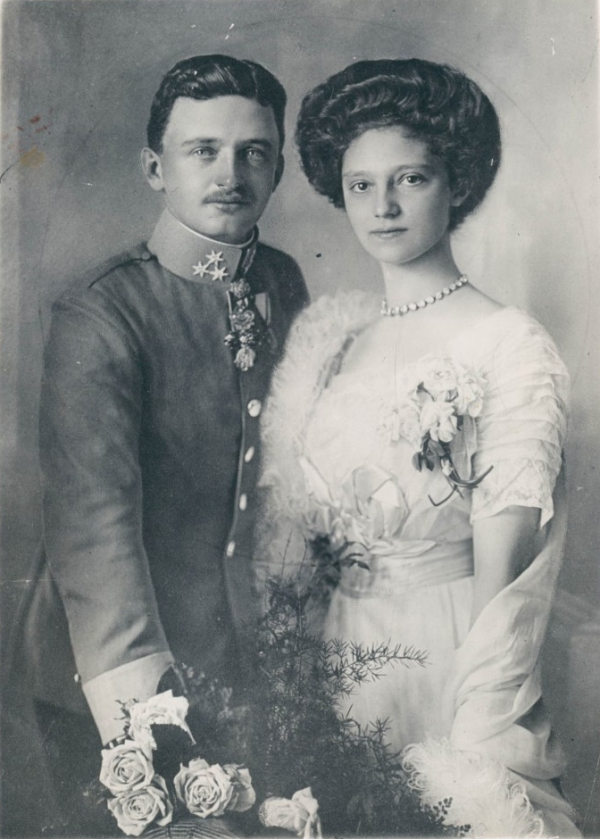 |
| Copy of the Florentine Diamond (Wikimedia Commons) |
Some famous diamonds are set in pieces of jewelry, while others reside in museums. And then there are the really fascinating gems that have been stolen, lost, or otherwise disappeared into the mists of time. Today’s gem, the Florentine Diamond, belongs to that roster of gone-but-not-forgotten stones.
 |
| Illustrated detail of the facets of the Florentine Diamond, ca. 1907 (Wikimedia Commons) |
The accounts of the earliest centuries of the diamond’s post-discovery existence are, as is true with so many of these stones, a little more lore and legend than history. Most everyone seems to agree that the diamond was mined in India. It somehow made its way to Europe, but we don’t really seem to know for certain whether that path involved transaction, theft, or a combination of the two.
One version of the story connects the canary-colored diamond with the Portuguese colonial history of India. In that story, the diamond was “acquired” by the colonial governor of Goa from one of the Kings of Vijayanagara (perhaps King Sriranga I?) in the late 1500s. The story goes that the Portuguese official handed off the diamond to the Jesuits, who were conveniently running an inquisition (!) in Goa at the time. They supposedly took the diamond to Rome, bringing it into the European world for the first time, where it was purchased by Ferdinando de Medici (1549-1609).
 |
| Peter Paul Rubens, Charles the Bold, ca. 1618 (Wikimedia Commons) |
But that’s just one version of the story. Another version of the diamond’s history finds it first in Bruges in the middle of the 15th century. There, it was supposedly transformed from a rough stone into the famous 137.27-carat faceted diamond by Lodewyk van Bercken, an innovative Flemish diamond cutter. His patron, Charles the Bold, Duke of Burgundy (1433-1477), had commissioned him to cut the diamond. Charles supposedly brought the diamond with him to the battlefield — not a great move! — and during a battle in the 1470s, he lost it. The story goes that it was picked up by a lowly soldier, who didn’t know the value of the yellow stone and sold it for a pittance. From there, it allegedly hopped from Switzerland to Genoa to Germany to Florence, maybe even making a quick stop at the Vatican.
 |
| Ferdinando II de Medici, Grand Duke of Tuscany (Wikimedia Commons) |
One thing is for certain: by 1657, the Florentine Diamond was in the possession of Ferdinando II de Medici, the Grand Duke of Tuscany. He showed the diamond to Jean-Baptiste Tavernier, the French famous jewel merchant and world traveler. (You’ll probably recognize Tavernier’s name from his association with the famous Hope Diamond.) Tavernier wrote about the diamond in his memoirs, giving us one of the first documented references to the gem. The Medicis kept the diamond through their long tenure as rulers of Florence and Tuscany. When the last Medici grand duke died without an heir in 1737, he was succeeded by his second cousin, the Duke of Lorraine — who also became the new owner of the Florentine Diamond.
 |
| Empress Maria Theresa painted by Martin van Meytens, 1759 (Wikimedia Commons) |
The Duke of Lorraine is better known to history as the Holy Roman Emperor Francis I. His wife, Empress Maria Theresa of Austria-Hungary (and lots of other places, including Milan and Parma), wielded the real power behind the scenes of their titles. (You might recognize them as the parents of Marie Antoinette.) Their marriage brought the diamond into the Habsburg imperial treasury, where it stayed for almost two centuries.
 |
| The Florentine Diamond set in a cap ornament, ca. late 19th century (Wikimedia Commons) |
In 1833, the New York Mirror published a travelogue from American writer Nathaniel Parker Willis that included a visit to the imperial treasury in Vienna. He described the Florentine as “a lump of light.” Willis wrote that even though “enormous diamonds surround it … it hangs among them like Hesperus among the stars.” The Habsburgs used and displayed the diamond in various ways, placing it in a crown, brooches, and a cap ornament (pictured above).
 |
| Emperor Karl and Empress Zita, ca. 1911 (Wikimedia Commons) |
By 1918, world war had ravaged Europe, and the Habsburgs were toppled from their imperial throne. The last imperial couple, Emperor Karl I and Empress Zita, fled with their family to Switzerland. Controversially, they took many of the crown jewels along with them, including the Florentine Diamond. Some Austrians maintained that these jewels were the property of the state, and Karl had no right to abscond with them. And then, to make things even more complicated, the Italians also filed a claim over the Florentine Diamond, arguing that the diamond had been willed by the Medicis to the people of Florence in the eighteenth century.
 |
| Karl, Zita, and seven of their children, ca. 1921 (Wikimedia Commons) |
The diamond vanished completely from public view. Some believe that it was stolen from the imperial family in exile, while others believed that the Habsburgs stashed the diamond in a Swiss bank and used it as collateral for substantial loans. In 1921, the London Observer‘s correspondent in Geneva wrote that the crown jewels taken by Karl “are still in this country, so far as is known; and it is on these jewels that he must have received pecuniary advances.” Matters were complicated yet again when Karl died in April 1922, leaving Zita with eight children and little security or stability. Sensational press reports claimed that “the Florentine Diamond was the last barrier standing between the ex-empress and actual poverty.” And she certainly needed the money, as her widowhood lasted for 76 years (!) until her death in 1989.
 |
| Copy of the Florentine Diamond from the Museum Reich der Kristalle in Munich (Wikimedia Commons) |
So what happened to the diamond next? I wish we had an answer to that question! There are rumors that it made its way to South America, or even to the United States. But in reality, there’s been no substantiated appearance of the Florentine Diamond in more than a century. The bright golden “diamond” shown above is actually a copy of the Florentine from a Munich museum. It’s quite possibly the closest thing most of us will ever come to seeing the genuine article.

But if you’re interested in fictional endings to this diamond mystery, let me again recommend Amy Meyerson’s new novel, The Imperfects. We talked about this briefly in my May recommendations post. The book follows the story of a contemporary American family, the Millers, who discover that the enormous gemstone they’ve secretly inherited from their grandmother is, in fact, the missing Florentine Diamond. What would you do if you inherited such a spectacular treasure? You can find out what the fictional Millers decide to do in Meyerson’s excellent book.

And if you’re interested in learning even more about The Imperfects, I’ll be chatting all about it virtually with Amy this evening! (I have lots of questions to ask her about the inspiration behind the jewel mystery in the book!) You can join us live online for the event, which is sponsored by the Cecil County Public Library. Click here to register for a link to join in tonight at 6:30 PM Eastern Time!
Leave a Reply